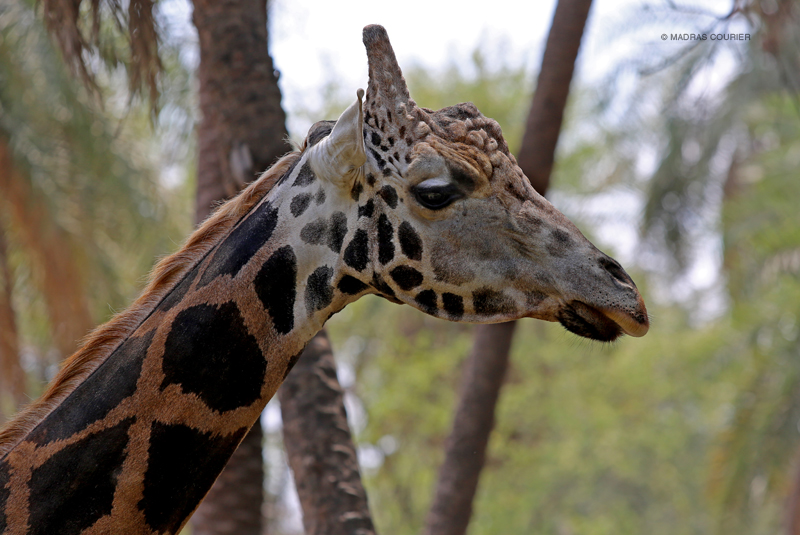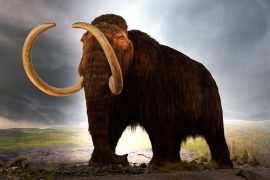Evolution is not usually thought of as an arms race. But the term, evolutionary arms race, is a prominent facet of evolution theory. In the case of the Giraffe and the Acacia tree, it’s a story of defences, counter-defences and counter-counter-defences.
Giraffes first appeared on this planet around 5-23 million years ago (mya), in the early to middle phase of the Miocene. The Giraffidae family has two extant species – the long-necked Giraffe, and its shorter-necked cousin, the Okapi.
To understand why the giraffe is the way it is, we must turn to one of its favourite foods – the leaves and twigs of the Acacia Tree. In particular, the Southern African species of Vachellia Erioloba – also known as the “Giraffe Thorn.” Its branches are dotted with razor sharp thorns, resembling barbed wire.
Why would a plant need such thorns? To keep herbivores at bay, one would imagine. But this is simply the first line of defence – one that giraffes breached early on. The giraffe’s tongue is a blackish, purple whip – 50 centimetres (cm) in length. It’s capable of weaving through and past Acacia’s spiky thorns, to grasp the leaves it so desires.
Copyright©Madras Courier, All Rights Reserved. You may share using our article tools. Please don't cut articles from madrascourier.com and redistribute by email, post to the web, mobile phone or social media.Please send in your feed back and comments to [email protected]











